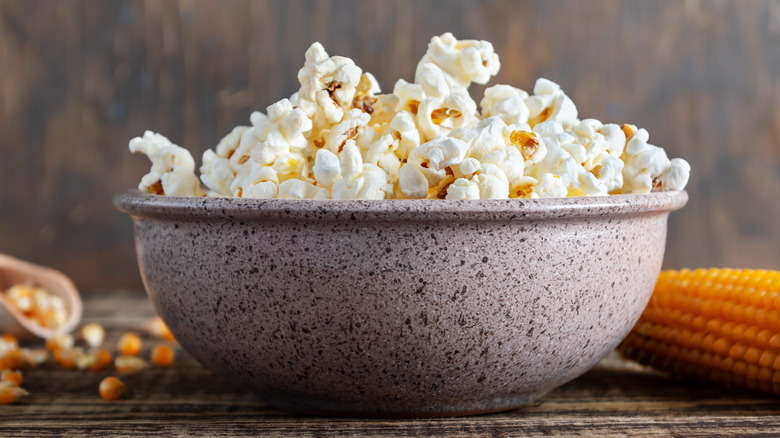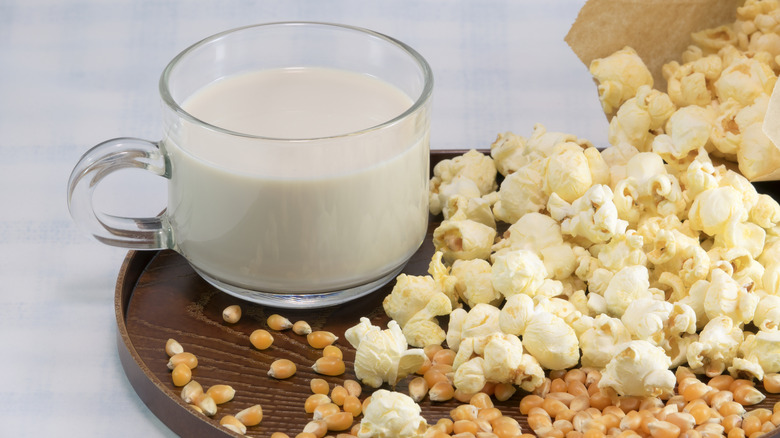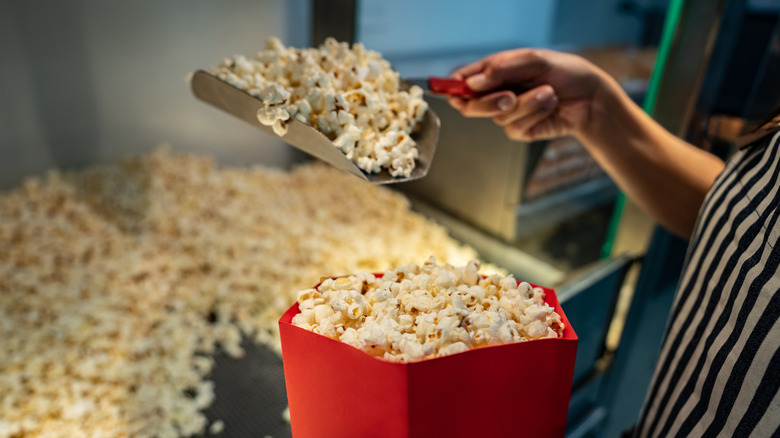Before Movie Theaters, Popcorn Was The Prototype For Breakfast Cereal
Whether you like your popcorn doused in butter, crunchy and sweet, covered in white cheddar, or tossed with caramel, popcorn lovers will agree that it makes the perfect snack for watching a movie or streaming a TV show. But popcorn wasn't always a movie snack. Before becoming the staple of movie theaters, the whole grain used to be a ubiquitous breakfast food.
Corn, originally known as "maize" in the Americas, has been eaten for thousands of years. And it's widely believed that its earliest uses involved being popped. The grain was integral to many Native American traditions and ceremonies, including the Aztec tradition of scattering corn before fishermen to honor the Aztec god of water.
Early accounts from Spanish conquistadors refer to Peruvian Indians who would "toast a certain kind of corn until it bursts," describing the popcorn as a beautiful white flower and referring to it as a "confection."
Popcorn and milk for breakfast? Not as strange as it sounds
Fast-forward to the late 19th and early 20th centuries, and popcorn was being eaten with milk for breakfast. Much like we now eat Corn Flakes, Rice Krispies, and Corn Pops in the morning, eating grains for breakfast has been popular for decades. But even before the corn flake, popcorn was being ground up and consumed with milk or cream in the mornings.
Ella and John Harvey Kellogg, of the Kellogg breakfast cereal company, claimed that popcorn was an "excellent food, easily digestible, and to the highest degree wholesome," according to Popcorn.org.
Corn was not only delicious in many forms, but it was also inexpensive and accessible. It was particularly popular during the Great Depression of the 1930s, when it was common to see vendors pushing popcorn carts around fairs and parks. The popcorn business thrived while other businesses failed — you could get a bag of popcorn for 5 to 10 cents, making it a "luxury" some families could afford.
From the breakfast table to the movie theater
The shift from breakfast food to movie theater snack was a quick one. Because movie theaters strived to be like regular theaters, they initially wouldn't let the street snack in to dirty their plush seats and beautiful carpets. But when films added sound in the 1920s, a wider audience was drawn into theaters, as the ability to read subtitles in silent films was no longer required. According to Smithsonian, as many as 90 million Americans were visiting movie theaters weekly by 1930, but then the Great Depression hit.
To try to keep people from giving up the luxury of going to the movies, theater owners decided to try selling popcorn to entice guests. Popcorn was inexpensive for both owners and guests, and it got movie-goers to buy movie tickets. Some popcorn vendors even set up their carts outside theaters so guests could purchase a bag on their way in.
And so the universal movie snack was born.



